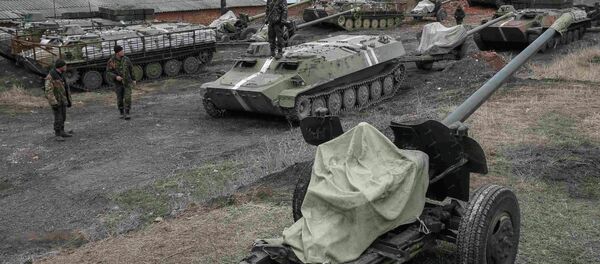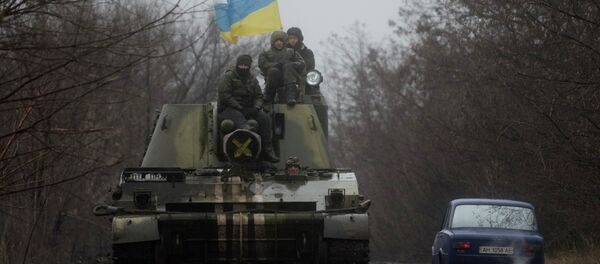"The SMM intends to re-visit all the locations it has been told are storage sites for military hardware that it has monitored being moved, so as to verify that the weapons remain in situ [on site]," the OSCE Special Monitoring Mission (SMM) said in its March 8 report, released on Monday.
According to the report, the SMM observed the withdrawal of heavy weaponry by independence fighters of the self-proclaimed people's republics of Donetsk and Luhansk (DPR and LPR) on March 7.
Meanwhile, a representative of the Ukrainian Armed Forces told the SMM that they intended to complete their last arms withdrawal by the end of that day and the observers monitored several convoys of Kiev forces' military hardware being moved away from the contact line on March 7 in both the Donetsk and Luhansk regions.
On March 9, Gen. Philip Breedlove, NATO's Supreme Allied Commander, Europe (SACEUR), announced that he could not confirm the withdrawal of heavy weaponry from the line of contact between Kiev forces and independence fighters in southeastern Ukraine (Donbas).
Breedlove told the Ukrainian "1+1" TV channel that it could well be that the weaponry is returned to the previous locations after it is pulled out.
The pullout of heavy weapons is one of the key provisions of the ceasefire deal reached by Kiev, DPR and LPR in the Belarusian capital, Minsk, last month. The truce followed almost a year of fighting between the two sides and was the second one, with the first, failed, ceasefire agreement having been signed in September, 2014.
The Kiev forces announced last Wednesday that they had begun the second stage of their weaponry pullback. Meanwhile DPR and LPR stated that they completed the withdrawal of heavy arms from the line of contact on March 1, meeting the deadline stipulated by the Minsk agreements.
The OSCE, which has been tasked with monitoring the Minsk ceasefire agreement implementation, has not fully confirmed the weapon pullback in Ukraine, having requested more detailed information from both of the conflicting sides.



